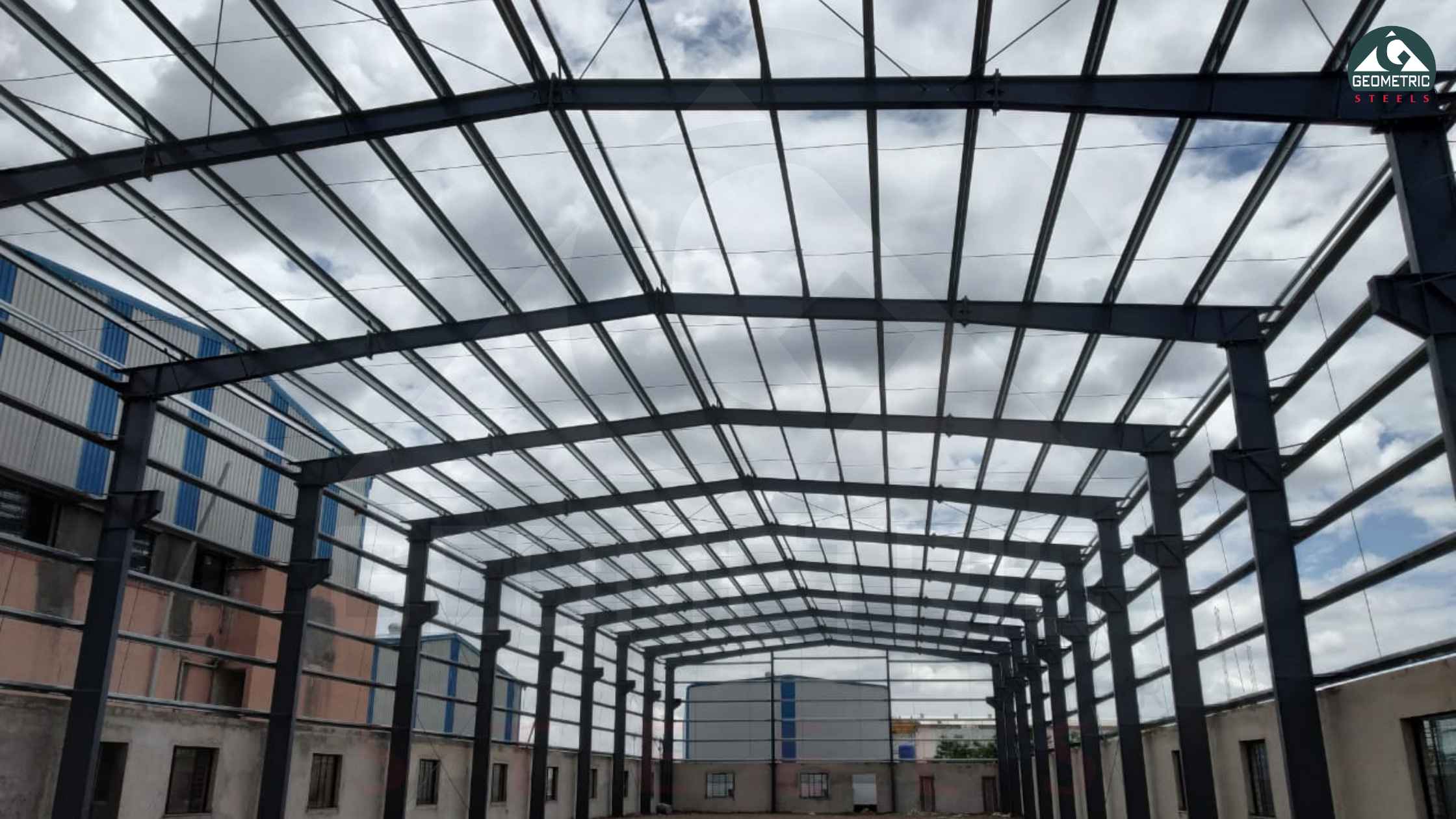What Are Purlins? A Complete Guide for Metal Roofs & Steel Structures
July 03, 2025 | by
Geometric Steels

If your structure has a metal roof, it likely depends on purlins to carry the load. Purlins are essential for the strength and longevity of modern roofing systems, playing a critical role in everything from warehouses to industrial sheds.
At Geometric Steels, we manufacture a wide range of purlin sections—C, Z, U, L, Hat, and custom profiles—designed for maximum performance across all types of steel roofing and cladding projects.
What Are Purlins?
Purlins are horizontal structural components used in steel buildings and roofs. They span between rafters or steel frames to support roof and wall coverings. Whether you're choosing a purlin for roof, wall, or truss application, selecting the right profile is critical to ensuring proper load transfer and long-term stability.
Made from cold-formed steel, purlins provide an excellent strength-to-weight ratio, reduce material usage, and support complex architectural spans.
Functions of Purlins in Roofing Systems
- Distribute Roof Loads: Purlins evenly transfer roofing sheet loads onto the primary structural members, such as trusses or beams.
- Provide Structural Support: A roof support purlin adds rigidity and helps resist bending and lateral forces.
- Maximize Span Efficiency: Purlin sections allow wider spans between supports, ideal for metal building purlin designs.
- Enable Slope Control: Purlins help define the slope of a roof for proper drainage.
- Serve as Fixing Surface: Sheets are directly fastened onto purlins in a roofing structure purlin system.
Types of Purlins Used in Steel Construction
C-Purlins
C-purlins are commonly used as wall purlin or roof frame elements. Ideal for purlin for truss or vertical supports.
Z-Purlins
Z-purlins overlap at joints and are often used as steel roof purlin components in large structures.
U, L, Hat, and Special Section Purlins
Used in corners, partition supports, curtain walls, or lightweight purlin for shed structures.
Engineering Considerations
| Factor | Importance |
|---|
| Span and Spacing | Determines number of supports per bay |
| Section Properties | Affects bending capacity |
| Connection Details | Ensures load transfer |
| Deflection Limits | Prevents sagging |
| Corrosion Protection | Depends on environment |
Steel Purlins vs Traditional Alternatives
Steel purlins offer longer life, low maintenance, and better strength. Preferred for industrial purlin applications across warehousing, cold storage, and logistics.
Choosing Between C and Z Purlins
| Feature | C-Purlins | Z-Purlins |
|---|
| Load Transfer | Vertical support | Continuous span overlapping |
| Common Use | Walls and trusses | Large roofs, sheds |
| Ease of Installation | Simple setup | Requires alignment |
| Cost Efficiency | Standard use | Optimized steel use |
Frequently Asked Questions
What is the standard spacing for purlins?
Typically 1.2–1.8 meters depending on design. Always check structural specs for your purlin for roof.
Can I use purlins in residential projects?
Yes, particularly in open-plan homes. Roofing structure purlin types like C/Z are flexible and cost-effective.
What is the lifespan of steel purlins?
With protective coating, a metal building purlin can last over 30–50 years.
Why Choose Geometric Steels?
- Trusted since 2006
- Range of purlin sections: C, Z, U, L, Hat & custom
- Manufactured at Kurkumbh MIDC near Pune
- Supplied for sheds, schools, factories & more
keywords: purlin for roof, roof support purlin, purlin for shed, steel roof purlin, metal building purlin, industrial purlin, purlin sections, purlin for truss, roofing structure purlin, wall purlin
